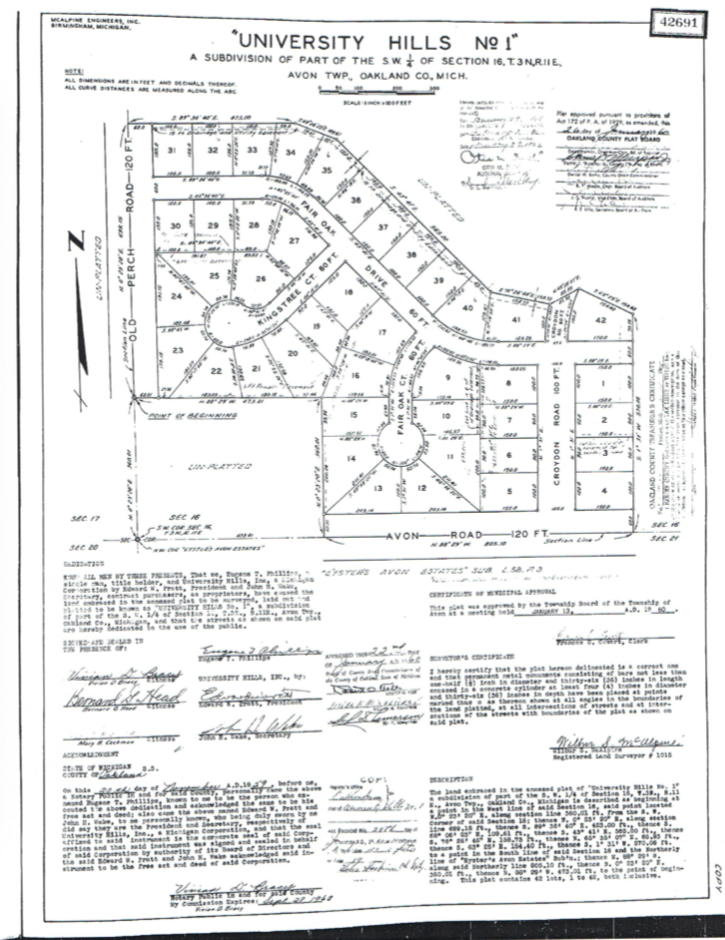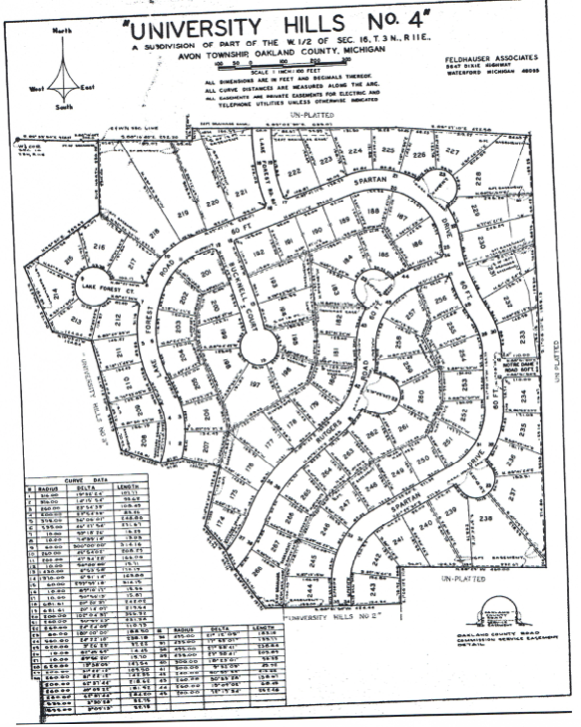Deed Restrictions
The Documents Guide Our Subdivision Use
University Hills subdivision is split into four phases, each with their own Deed Restrictions, or limitations, on property use. While the restrictions vary slightly from phase to phase, the restrictions for all phases state that any modifications made to the outside of your home must be brought to the University Hills Board of Directors for review prior to commencing said modifications to ensure they are harmonious with the rest of the subdivision. Aside from the Deed Restrictions, the subdivision also has a homeowners association (University Hills Association, Inc.) which is governed by a set of Bylaws that state how it should be run and organized. Phase 1 of the subdivision was constructed before the organization was founded, and therefore, residents in that phase have the option to join as voluntary members. Residents in phases 2, 3, and 4, however, are required to be a part of this association and pay annual dues in the amount of $250 which go towards subdivision maintenance and fellowship amongst the neighbors.

Sub 1
Sub 1 is the original phase of subdivision development and has a separate set of rules and restrictions than the other phases.

Sub 2
Sub 2 was created after the original development of homes (Sub 1) was sold to a new developer and University Hills was born. Refer to these restrictions if you live in Sub 2, Sub 3, or Sub 4.
University Hills Subdivision Deed Restrictions – Section 2

Sub 3
Sub 3 is an extension of Sub 2 and contains additionally developed homes that were built after the creation of Sub 2. Refer to these restrictions and the restrictions for Sub 2 when looking at restrictions on this property.
University Hills Subdivision 3 Deed Restrictions

Sub 4
Sub 4 is an extention of Sub 2 and contains additionally developed homes that were built after the creation of Sub 2 and Sub 3. Refer to these restrictions and the restrictions for Sub 2 when looking at restrictions on this property.
University Hills Subdivision 4 Deed Restrictions
To Request A Property Modification
All four University Hills subdivisions prohibit the construction of exterior home modifications or additional structures on your property without prior approval from the University Hills Board of Directors. This is to ensure that the subdivision develops into a beautiful, harmonious property for years to come. If you are considering making modifications to your home or lot, please review the specific Deed Restrictions for your lot carefully to determine what is allowed.
To submit a proposal for modifications, please include a brief description of the project along with plans from an architect (if used), and submit it to admin@uhills.net. As stated in the Deed Restrictions, your proposal should include the following:
– a detailed description of the desired addition (with a picture if possible)
– specifics on size and location on lot
– details on the workmanship, material, color, and landscaping planned
– plans from an architect
– time constraints of the project (when you expect to start/complete the project)
As stated in the Deed Restrictions, please allow up to 30 days to complete this approval process.
To Report Deed Restrictions Violations
It is our hope that everyone follows the Dees Restrictions carefully nd respects their neighbors, but unfortunately, that is not always the case. All Deed Restriction violations need to be submitted in writing to the Board of Directors. If the violation is building related, it will follow the 5 step process as detailed below:
1. Complaint Received: The Board of Directors receives a complaint and makes a visual confirmation of the new violation. Complaints can be sent via email to admin@uhills.net, or in writing to the post office box mailing address for the association.
2. Determine Responsibility: The complaint is reviewed in detail and determined if it is a violation that the City of Rochester Hills can enforce. If yes, then the violation is reported to the city to resolve; if no, the Board moves to Step 3.
3. Contact Homeowner: The Board contacts the Homeowner, via phone or personal visit, to notify them of the situation and to discuss the action needed and the deadline required to resolve the situation.
4. Notification of Resolution: The Board sends a letter, via email or mailed letter, to the Homeowner confirming the pics discussed in Step 3.
5. Correction of Violation: The Homeowner corrects the violation within the time allotted and the Board maintains written records and documentation of the situation.
